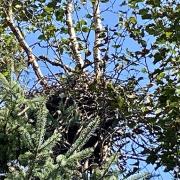
Assessing Heron Nesting Activity in Fall: No Herons? No Problem!
We visited the island where our GPS-tagged great blue heron, Mariner, nested this past summer. Even without any herons still using the nests, we used other clues to determine which nests were active.
Deer Isle Mariner is Latest GPS-Tagged Great Blue Heron
Meet “Mariner,” the newly GPS-tagged great blue heron from Deer Isle. On June 3rd, Mariner became the 11th great blue heron in Maine to be added to the Heron Tracking Project that began in 2016.
Spring is Here, but Where are Our Tagged Herons?
Spring is here, and we are patiently waiting for our tagged herons to return from their wintering areas. Here's an update explaining why we haven't seen them yet.
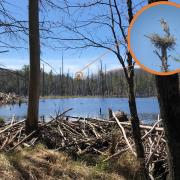
Beaver Flowage Attracts GPS-Tagged Heron to Nest
Have you heard of Cornelia, an adult female great blue heron tagged with a GPS transmitter, who nests in Maine and migrates to the Bahamas for the winter? She is one of ten other herons who’ve been equipped with GPS transmitters by Maine Department of Inland Fisheries and Wildlife (MDIFW) to learn more about heron movements, habits, and habitats in Maine and beyond. The project began with the help of a Maine Outdoor Heritage Fund grant and many partnering schools, and is part of MDIFW’s ongoing efforts to understand the status of great blue herons in the state – especially along the coast where their population has declined by 89% since the 1980s.
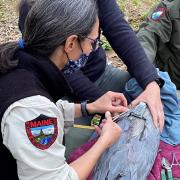
First Maine Island-Nesting Heron Tagged with GPS Transmitter
IFW technician Brittany Currier holds tagged great blue heron just before release. To ensure everyone’s safety, IFW biologist Amanda Cross holds onto the bill.
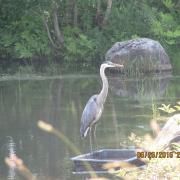
Tracking Nokomis Connected People to Place, Both Near and Far
As a biologist, I know death is as much a part of the life cycle of all organisms as life itself, but it can still be difficult to contend with especially after you’ve “gotten to know” an individual animal by following its movements for nearly five years. That individual is Nokomis, a great blue heron we tagged with a GPS transmitter in 2016.
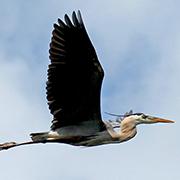
Harper Wows Us Again!
Harper, the GPS-tagged Great Blue Heron, has done it again! Last fall she impressed us with her 38-hour nonstop flight over the open ocean. This year, she has gone above and beyond, flying for 68 hours and 2,030 miles nonstop from Quebec to Georgia.
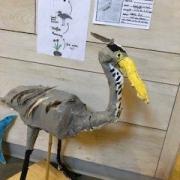
Flight of the Great Blue Heron by Mia
The following story was written by Mia, a fourth grade student at Friends School of Portland. Mia helped with the field work leading up to the capture and tagging of "Harper" the great blue heron, in Harpswell. She was also there the morning Harper was tagged with a GPS transmitter. Thank you, Mia, for sharing your perspective!
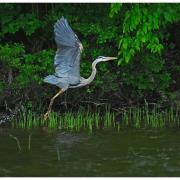
Maine Birder Band Helped the Heron Tracking Project Take Flight
Three years ago, MDIFW embarked on a heron tracking project, which has since redefined how many Mainers view great blue herons, understand their habitats and movements within the state as well as beyond our nation’s borders. Prior to this project, we knew little about where herons wintered, how many years they may nest in the same colony, how far they fly to forage. Additionally, we knew little about nesting, post-breeding, migration and wintering seasons.
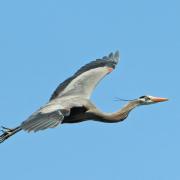
Harper's Marvelous Migration Sparks More Questions - Here Are Some Answers
For those who may be late to the party, “Harper” is an adult female great blue heron who was captured and tagged with a GPS transmitter in Harpswell, Maine, by IFW biologists with the help of students from Harpswell Coastal Academy and volunteers with Harpswell Heritage Land Trust.
Keep In Touch!
Enter your email or mobile number to receive the latest news from MDIFW.